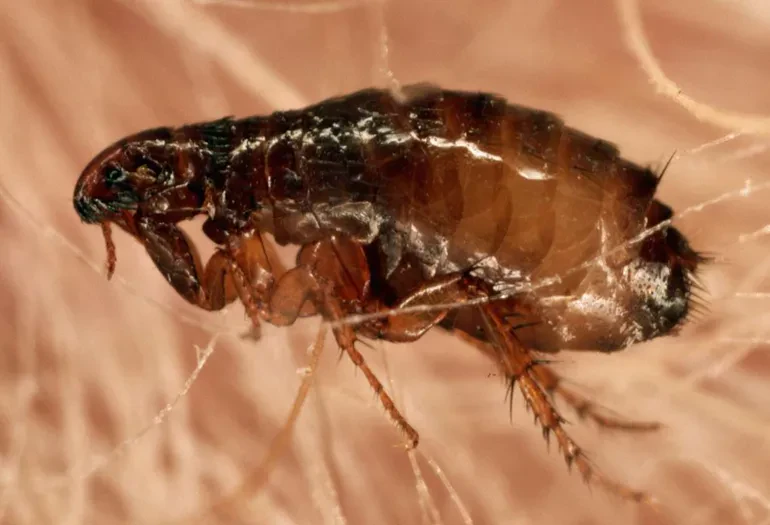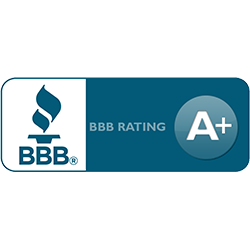Fleas and Ticks Pest Control
Fleas and ticks are parasites that feed on the blood of animals, including pets and humans. While they are most common in outdoor environments, you can also find them in indoor spaces. They can be intensely difficult to control if an infestation occurs due to some reasons. The most effective way to be clear of fleas and ticks is to prevent the infestation beforehand. The prevention methods include regular pet grooming, cleaning outdoors for debris, using insecticides and repellents every once in a while, but of course - in a safe way, etc. Though both entities are different in characters, they typically come together but to prevent their infestation, you must learn their differences in detail.
However, if you ever suspect any one of them or both, immediately dial 402-691-2920 for Pratt Termite & Pest Control, Inc.
Fleas
Fleas are small wingless insects with flattened bodies and powerful legs to jump long distances. They are either available in brown or black color. You can normally see them on pets like cats and dogs but they can also infest humans. Their bites lead to skin irritation, itching, and similar allergic reactions.
Ticks
On the other hand, ticks are small arachnids remotely related to spiders and scorpions, unlike fleas. Ticks consist of flat but round bodies in either brown or black color. They are well known to transmit diseases like Lyme disease, Rocky Mountain spotted fever, and tick-borne encephalitis with their bites. They attach themselves to the skin of their host to bite them and feed on their blood.
Is Flea and Tick prevention required?
Flea and Tick prevention is a crucial activity and should be prioritized to stay safe from unwanted health problems. Even if you get infested with fleas and tick, you need to immediately contact a professional pest control service like Pratt Termite & Pest Control, Inc. Fleas and ticks are very common in Omaha as they are in many other cities of the United States. Since Omaha has a humid continental climate, fleas and ticks easily get their ideal environment. Some common species of ticks in Omaha are the American dog tick, the lone star tick, and the black-legged tick.
If you ever suspect or find out any kind of frontline flea and tick infestation around Omaha, call 402-691-2920 for a thorough inspection and control, if needed.
Risks of fleas and ticks in your pets
Flea and tick dogs cause several health risks and threaten their well-being. Here is a brief list of what can happen if flea and tick prevention for dogs isn’t implemented correctly.
- Dog flea and tick causes extreme irritation and discomfort for pets and can lead to excessive scratching and licking to result in an infection.
- Most pets are allergic to flea and tick bites which brings on swelling, hives, and even anaphylaxis in some cases.
- Since fleas and ticks’ bites create skin openings, there is a high risk of severe infections with redness, swelling, and discharge.
- There is a higher chance that your pet will develop Anemia since the red blood cells decrease after the fleas’ bites.
- Fleas and ticks transmit diseases to pets which can sometimes be life-threatening to them if left untreated.
- Fleas’ infestation can lead to tapeworms whose signs are seen as weight loss, diarrhea, and similar health problems.
- Since fleas and ticks result in constant scratching and discomfort, pets can develop behavioral issues. These issues include anxiety, restlessness, and irritability.
There are many flea and tick prevention dog campaigns conducted every once in a while for general awareness. Even we conduct some programs to let you know about different flea and tick medicine for dogs, dog tick and flea pills, and so on.
How do Flea and Tick Infestations occur?
Fleas and Ticks have the probability of infesting any pet or home, regardless of the maintained cleanliness. They can enter via many mediums and reproduce rapidly making it difficult to have a normal livelihood.
Most pets want to spend time outdoors where they can pick fleas and ticks from other animals like stray cats, raccoons, and squirrels. Even indoor pets can get them from rodents or other visiting animals. Sometimes, if the outdoor areas are already infested, they can hitch a ride indoors on shoes, clothing, or the skin itself.
Jumping and crawling are very common for fleas and ticks which leads to the host transformation via clothing, bedding, and furniture. If pets or human comes into prolonged contact with the infected areas, they can also get infected.
Once the infestation occurs, the reproduction process is very quick. Female fleas can lay up to 50 eggs per day and tick eggs can hatch into hundreds of larvae within a few weeks.
When to call for help?
Fleas and ticks can be challenging to handle if they have already taken hold of your home. While it is possible to handle small infestations in the beginning with some home treatment plans like vets' best flea and tick spray, flea and tick shampoo, etc., we highly recommend you contact a professional service provider like Pratt Pest Control.
If you or your pets are getting bitten by fleas and ticks despite your efforts to prevent it, you can contact a licensed professional to eliminate the threat and prevent future activities. If you even suspect a little about the infestation and are very aware of the possible health risks, you need to start thinking to contain it soon.
How does the fleas and ticks’ elimination work?
As a pest control company, we typically start with the identification of the parasite and the severity of the infestation. There are provisions for visual infestations, the use of detection tools, and finally testing for diseases with related pets or humans.
Once we find out the infestation issues, the affected areas are treated with insecticides and other products. Likewise, we subsequently treat the pets to kill the remaining parasites and apply some flea and tick spray to prevent future infestations.
Finally, we provide regular follow-ups as needed and monitor the previously affected areas just in case. Ongoing preventive measures are also given so that future infestations can be avoided.
We have multiple control methods like chemical, non-chemical, or a combination of both. There are insecticides and fumigations under chemical methods while the use of heat and vacuuming falls under the non-chemical.
Frequently Asked Questions (FAQs)
- How often should I treat my pets for fleas and ticks?
There are factors to consider for the frequency of fleas and tick treatment in your pets. The age and health of your pet is the major one followed by the risk in your area and the instructions from your veterinarian consult.
- Are flea and tick treatments safe for pets?
The flea and tick treatment are generally safe for most pets like cats and dogs as long as it is done with the guidance of a veterinary professional.
- How much does the flea and tick elimination cost?
The cost for flea and tick elimination depends upon the severity of the infestation and the type of treatment which can only be determined after the initial inspection.
- Can I prevent fleas and ticks without any chemical use?
Yes, there are numerous options for the non-chemical approach but if the infestation is severe, the combination of both methods might be a good approach.
- Are flea and tick infestations only a problem in warm weather?
While fleas and ticks are more associated with warm weather, they can occur and exist in any possible season.





